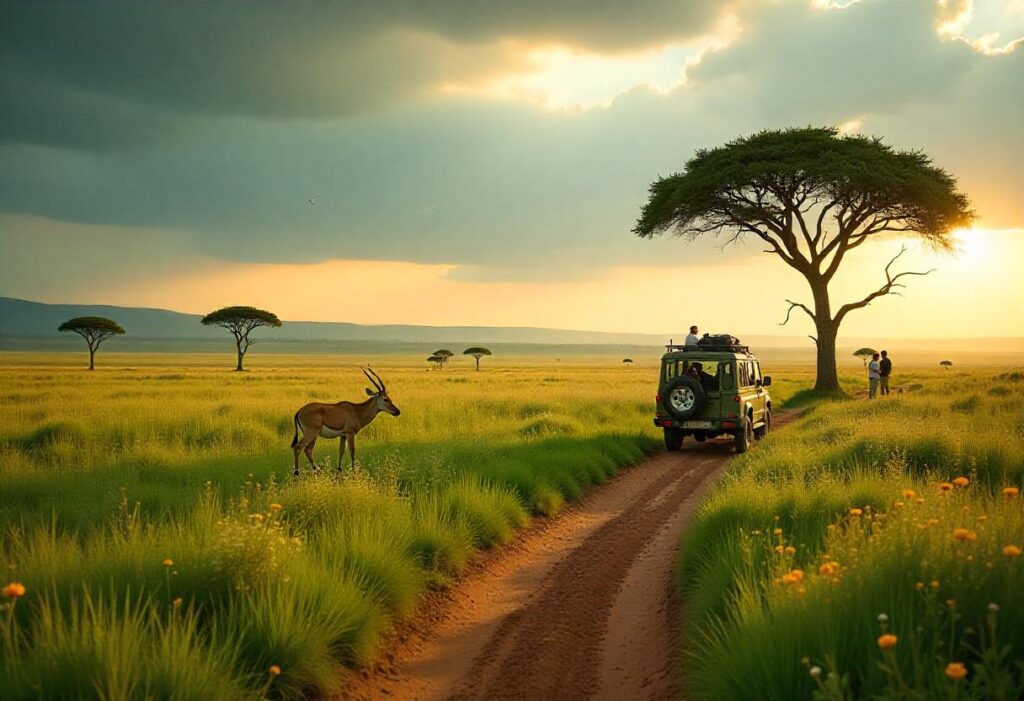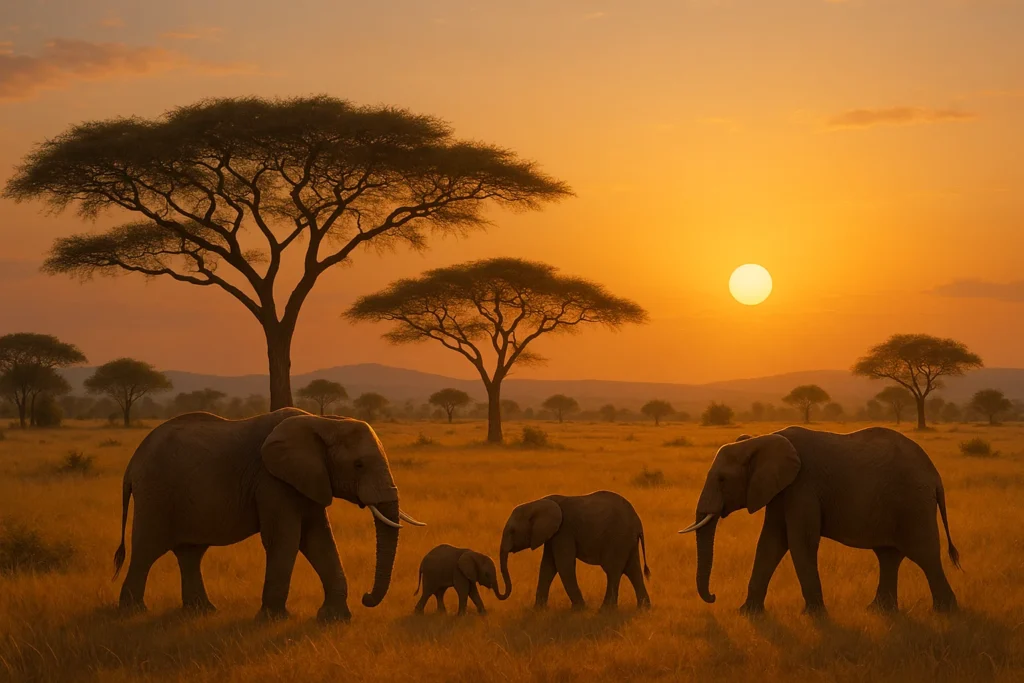When most people picture an African safari, they imagine dry landscapes, dusty roads, and peak-season crowds. But what if we told you there’s a secret season that offers lush scenery, lower rates, and baby animals everywhere? Welcome to Africa’s green season — the most underrated time to go on safari.
What is Africa’s green season?
Africa’s green season refers to the rainy or wet season, typically running from November to April depending on the country. While the idea of rain might turn off some travelers, those in the know understand that this is one of the most magical times to experience the continent.
Why the green season is ideal for safari travel
Dramatic landscapes and vibrant scenery
During the green season, dry savannahs are transformed into lush, green landscapes. Rivers fill, grasslands flourish, and the scenery becomes strikingly photogenic. If you’re a photographer or nature lover, the lighting and colors during this time are unbeatable.
Fewer tourists, more authentic experiences
Off-peak means fewer vehicles at wildlife sightings, more personalized attention from guides, and a quieter, more immersive safari. You can enjoy iconic destinations like the Serengeti or Okavango Delta without the crowds.
Lower rates and special deals
Many lodges and camps offer discounted rates during the green season — sometimes up to 30–50% less than peak season. For budget-conscious travelers or those seeking luxury at a better value, this period is ideal.
Wildlife highlights of the green season
Newborn animals and predator action
The rainy season coincides with calving season for many herbivores. You’ll likely witness wildebeest, impalas, and zebras giving birth — and where there are babies, predators aren’t far behind. The action can be intense and thrilling.
Excellent birdwatching
The green season is a birder’s paradise. Migratory species arrive in large numbers, and many birds are in full breeding plumage. Expect to see vibrant colors, nesting activity, and rare species.
Easier sightings in some regions
Although thicker vegetation can make some animals harder to spot, many predators use the greenery as cover, increasing the chance of dramatic encounters. And in regions like Botswana’s Delta, the floodplains make animals more concentrated.
Myths and misconceptions about the green season
“It rains all the time”
Reality: In most safari regions, rain comes in short bursts — often dramatic thunderstorms followed by sunshine. Days are typically warm and beautiful, with fresh air and dramatic skies.
“Wildlife disappears”
Far from it. Wildlife is still abundant — and in some cases more active. Calving season brings big herds and exciting predator-prey interactions, making this one of the most dynamic times for animal behavior.
Destinations where green season safaris shine
- Tanzania (Southern and Central Serengeti): The great migration calving season takes place from late January to March.
- Botswana (Okavango Delta): Water levels rise and birdlife flourishes.
- Zambia (South Luangwa): Dramatic skies, baby animals, and some of the best light for photography.
- Namibia (Etosha): Fewer tourists, unique desert-adapted wildlife in green contrast.
What to pack for a green season safari
- Lightweight, breathable clothes in neutral tones
- Waterproof jacket or poncho
- Quick-dry shoes or sandals
- Binoculars and camera with rain cover
- Insect repellent and sunscreen
- A flexible mindset — this is nature, after all!
Is the green season right for you?
If you value lush scenery, unique wildlife experiences, budget-friendly travel, and fewer crowds, the green season might be your perfect safari window. It’s ideal for photographers, birders, repeat safari-goers, and adventurous first-timers open to a different perspective.
Final thoughts
Africa’s green season is a well-kept secret that rewards those who go against the grain. With its vivid landscapes, lower costs, and intimate wildlife encounters, it’s a time of renewal and wonder. Don’t let the word “rainy” fool you — this might just be the best time to go on safari.
FAQs
The green season typically runs from November to April, but exact months vary depending on the country or region.
Mosquito activity may increase with more water sources, but proper precautions like repellents and antimalarials can minimize risk.
Not all. Some remote lodges may close temporarily due to flooding or accessibility, but many properties offer excellent green season packages.
Yes — especially in the southern Serengeti during the calving period (January to March), a key part of the migration cycle.
Quite the opposite. The green season offers rich colors, dramatic skies, and soft light — perfect conditions for stunning safari photography.






